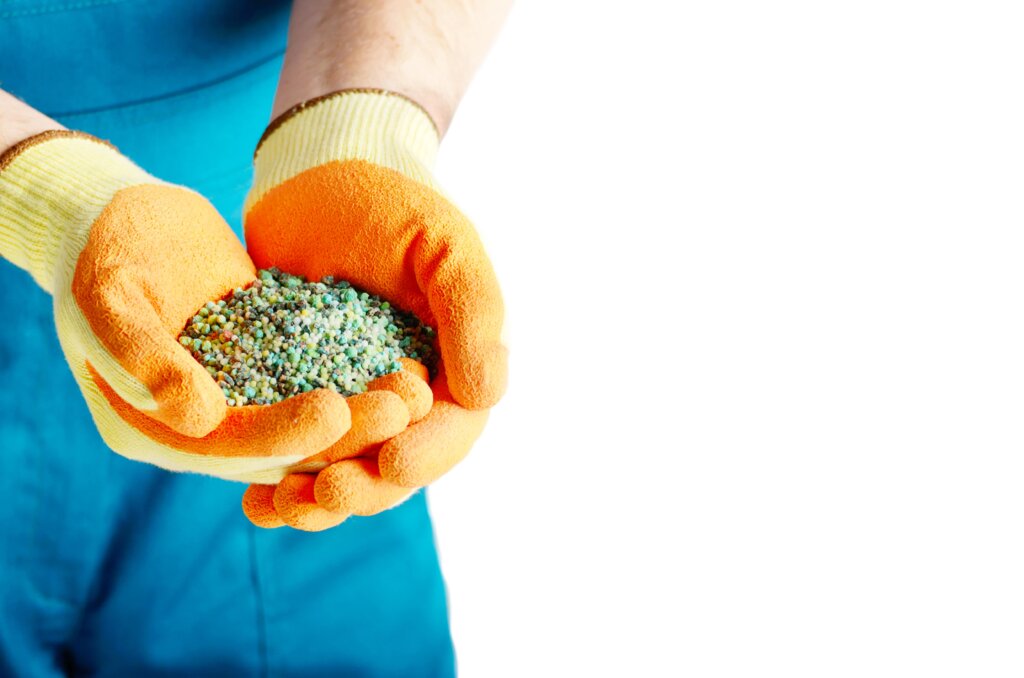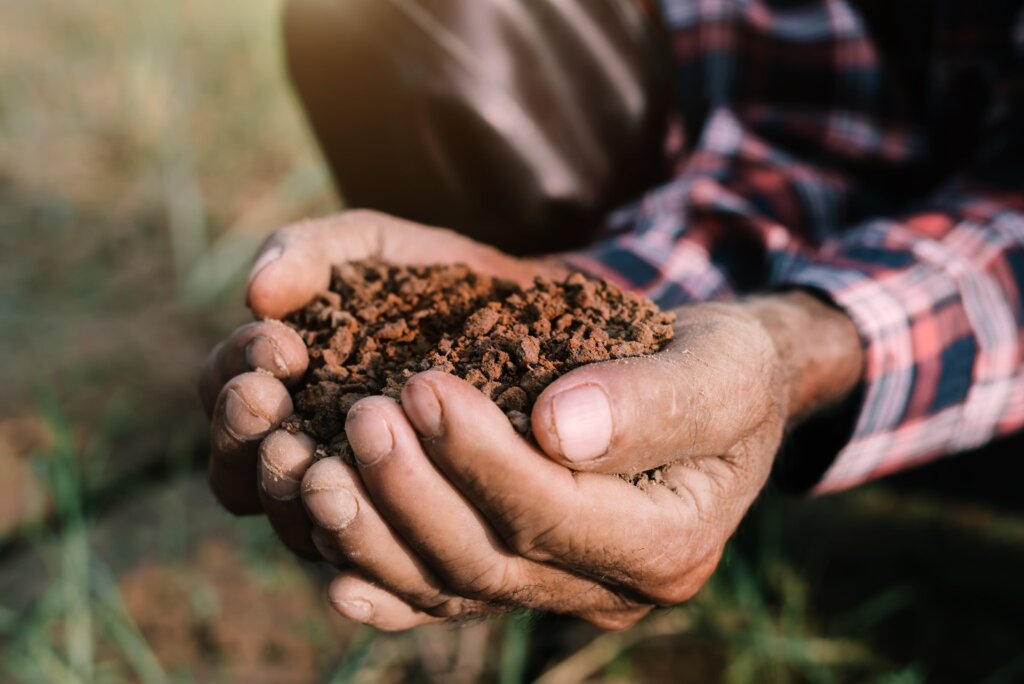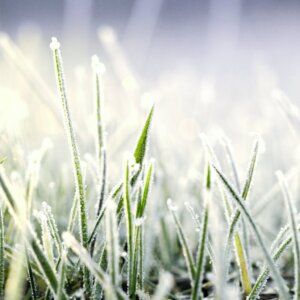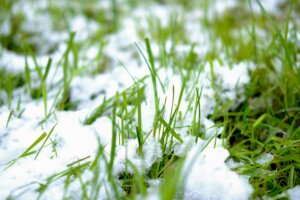Want a lush, green lawn that turns heads in Collegeville, PA? The secret starts with the right starter fertilizer application.
Whether you’re planting lawn seed or boosting existing turf, timing your fertilizer helps build healthy root systems and ensures your grass gets the primary nutrients it needs to thrive. Learn how to get it right with expert tips from Terra Lawn Care Specialists.
Key Takeaways
- Apply starter fertilizer when seeding or laying sod to help new grass develop strong roots and rich color.
- Use 0.5–1 lb. of nitrogen per 1,000 sq. ft. for balanced growth.
- Always begin with a soil test to check your lawn’s nutrient needs.
- Skip phosphorus if your soil already has enough.
- Follow up with proper watering and mowing for lasting, healthy turf.
Understanding When to Apply Starter Fertilizer
Knowing when to apply starter fertilizer helps your new grass develop strong roots and rich color. Whether planting grass seed or laying sod in Collegeville, PA, timing ensures essential nutrients reach the soil when growth begins.
Starter fertilizers differ from regular fertilizers because they contain the right balance of fertilizer nutrients like nitrogen, phosphorus, and potassium for early growth. According to the Penn State Extension’s guide on starter fertilizer, the best time to apply starter lawn fertilizer is in spring or early fall for cool-season grasses such as Kentucky bluegrass and tall fescue.
For warm-season grasses, apply the right starter fertilizer in late spring when the soil is warm enough for root growth and not affected by cold temperatures.
What Is in a Starter Fertilizer?

A good starter fertilizer usually features a balanced NPK ratio such as 10-10-10. Here’s a quick breakdown of the key components:
| Nutrient | Role in Lawn Health | Benefit for New Grass |
|---|---|---|
| Nitrogen (N) | Encourages lush color and quick leaf growth | Promotes dense, green turf in new lawns |
| Phosphorus (P) | Supports strong root development | Helps grass seedlings establish faster |
| Potassium (K) | Boosts disease resistance and drought tolerance | Builds resilience for long-term lawn health |
If your soil test shows high phosphorus, use an N-only fertilizer like ammonium sulfate or ammonium nitrate instead. Avoid products with urea or diammonium phosphate, which can damage young plants.
For more tips on choosing the right starter fertilizer for your yard, visit How to Fertilize Lawn.
How Much Starter Fertilizer Should You Apply?
When applying starter fertilizer, precision is key to promoting healthy growth without overfeeding your new grass.
- Apply 0.5 to 1 lb. of nitrogen per 1,000 sq. ft. of lawn.
- Avoid heavy applications that can stress new grass seeds or young plants.
- Choose granular fertilizers for slow, controlled release, or liquid fertilizers for quick absorption.
For step-by-step guidance on proper spreading methods and coverage rates, check out our detailed guide on Fertilizer Application.
Why a Soil Test Should Come First

Before you apply starter fertilizer, conduct a soil test to understand your lawn’s baseline nutrient levels. This test determines whether your soil needs phosphorus or potassium, vital for root growth and early development.
The Penn State Extension recommends tailoring fertilizer applications to your soil results rather than guessing. This ensures efficiency and minimizes runoff that can harm local waterways around Collegeville.
For expert help interpreting your results and creating a nutrient plan that fits your lawn’s needs, explore our Lawn Fertilization Services.
When and How to Apply Starter Fertilizer

Seeding a New Lawn
Apply starter fertilizer at the same time you plant grass seed. Mixing fertilizer lightly into the top 1–2 inches of soil ensures nutrients are readily available during germination.
Laying Sod
Before laying new sod, apply starter fertilizer directly to the soil surface. This encourages new roots to anchor quickly and promotes healthy turf establishment.
Overseeding Existing Lawns
For existing grass with bare spots, apply a small quantity of starter fertilizer along with seed. This helps rejuvenate thin or patchy turf without overfeeding established roots.
If you’re unsure whether to water right after, see Should You Water Your Lawn After Fertilizing? for best practices.
Sustainable and Eco-Friendly Fertilizing Practices
A healthy lawn also means responsible fertilizing:
- Avoid runoff near driveways or drainage areas.
- Use organic fertilizers or compost to add natural organic matter.
- Skip phosphorus-based fertilizers if your soil test shows sufficient levels.
These eco-conscious practices help protect local ecosystems and maintain soil health across our communities. To see if we serve your neighborhood, check our Service Areas.
How Starter Fertilizer Works
Starter fertilizers deliver nutrients directly to young seedlings, helping them establish a dense root system and strong blades early in the growing season. Within a few weeks, you’ll notice faster grass growth and improved color uniformity, especially when combined with adequate watering and proper mowing techniques.
If you’re wondering about mowing schedules, you can also read Should You Mow Before Fertilizing?.
Bottom Line: Building a Healthy Lawn That Lasts
A healthy lawn starts with the right fertilizer and proper timing. For new seed or established lawns, a good starter fertilizer supports strong roots, better nutrient uptake, and vibrant growth.
Use a balanced fertilizer suited to your grass types and soil conditions, and always follow the manufacturer’s instructions when you apply fertilizer. Whether you choose slow-release or quick-release nitrogen, consistency is key to long-term results.
Need help finding the best fertilizer for your lawn? Contact Terra Lawn Care Specialists for expert, local advice. Reach out today.
Frequently Asked Questions About When to Apply Starter Fertilizer
Starter fertilizer is best used when planting new grass seed or establishing a new lawn, not just anytime. It provides the necessary nutrients—especially nitrogen, phosphorus, and potassium—that help new seedlings and roots develop quickly. Once your lawn matures, switch to a regular fertilizer better suited for maintaining existing turf.
Yes, you can apply grass seed and starter fertilizer at the same time. In fact, doing so ensures your new turf gets immediate access to the nutrients it needs for germination and healthy root growth. Just make sure your soil has enough phosphorus, which supports strong early development and helps the plant establish faster.
Absolutely. Fall is a great time to apply starter fertilizer for new lawns, especially if you’re planting cool-season grass types. The moderate temperatures and consistent moisture support strong root growth, helping new seedlings absorb essential nutrients before winter sets in.
You should apply Scotts Starter Fertilizer right before or during planting seeds. This timing ensures your new grass seed receives the best fertilizer mix for rapid germination and early growth. Follow the product’s label for guidance on how much to apply, and avoid overusing nitrogen to prevent burning young plants.



